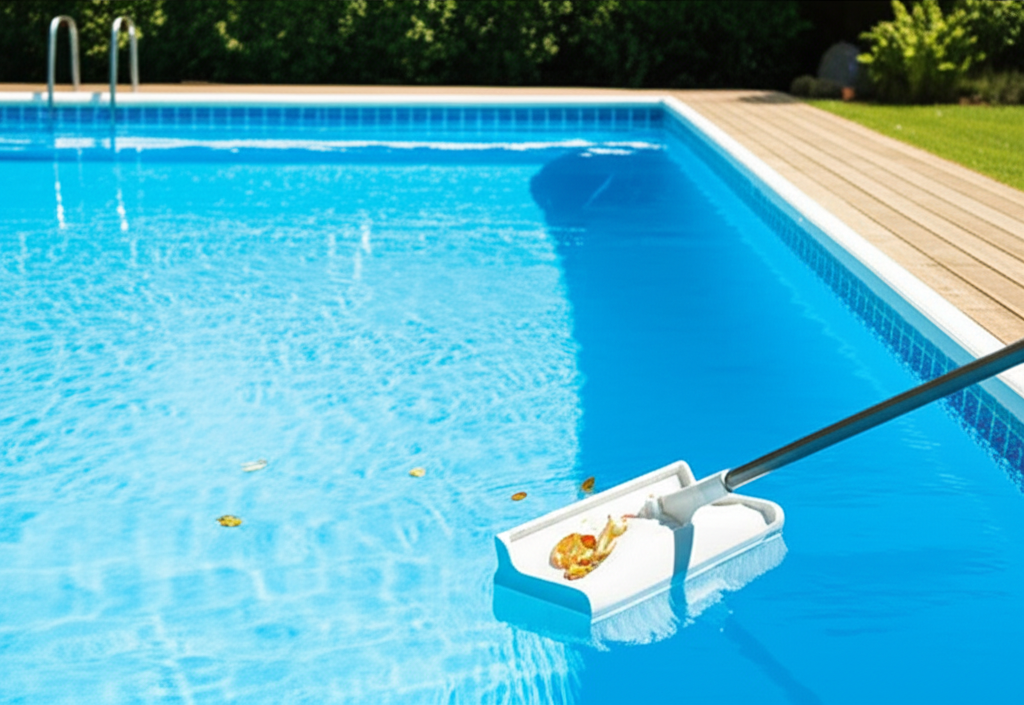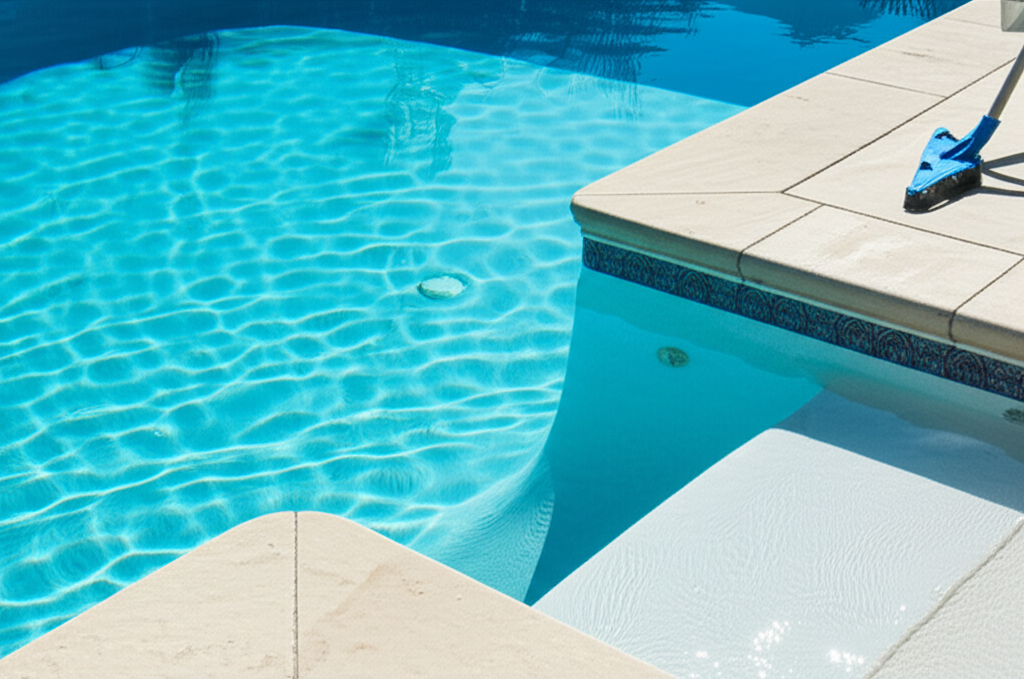Concrete Pool Maintenance: Your Guide to a Sparkling Oasis
Concrete pools are renowned for their strength, customization, and timeless beauty, offering a luxurious centerpiece to any backyard. However, to maintain their stunning appearance and ensure their longevity, consistent and correct concrete pool maintenance is essential. While the idea of pool upkeep might seem daunting, this guide will break down the process into manageable, easy steps, ensuring your aquatic haven remains a source of joy, not stress.
Understanding Your Concrete Pool
Often referred to as Gunite Pools, concrete pools are constructed by spraying a mixture of sand, cement, and water (gunite or shotcrete) over a steel rebar framework. Once cured, this porous surface is typically finished with a smooth plaster, aggregate, or tile. This construction method results in an incredibly durable structure, but the porous nature of the base and the integrity of the plaster finish dictate specific care routines different from vinyl or fiberglass pools. Neglecting proper care can lead to issues ranging from algae infestations to surface damage, compromising both aesthetics and costly repairs.
The Foundation of Flawless Pool Ownership
Effective maintenance hinges on a few core categories, each playing a vital role in preserving your concrete pool’s condition.
1. Water Chemistry: The Unseen Guardian
The single most critical aspect of any pool maintenance is balanced water chemistry. For concrete pools, this is particularly important because imbalanced water can be corrosive to the plaster finish or lead to calcium scaling.
pH Levels (7.4-7.6): This measures how acidic or alkaline your water is. Low pH can etch plaster, while high pH reduces sanitizer effectiveness and can cause scaling.
Alkalinity (80-120 ppm): Acts as a buffer for pH, preventing drastic swings.
Calcium Hardness (200-400 ppm): Critical for plastered pools. If the water lacks sufficient calcium, it will draw calcium from your plaster finish, leading to etching and premature wear. Conversely, too much calcium can cause scaling.
Sanitizer Levels (e.g., Chlorine 1-3 ppm): Keeps the water free from bacteria and algae.
Cyanuric Acid (CYA) (30-50 ppm): Stabilizes chlorine from UV degradation.
Test your water at least 2-3 times per week, especially during heavy use, and adjust chemicals as needed. Regular testing prevents small imbalances from becoming major problems.
2. Cleaning and Debris Management
Keeping your concrete pool physically clean is crucial for both aesthetics and water quality.
Skimming: Daily skimming removes floating debris (leaves, insects, etc.) before they sink and break down, impacting water chemistry.
Brushing: This is paramount for plaster care on concrete pools. Brush the walls, floor, and steps at least 2-3 times a week (daily if it’s a new plaster finish for the first month). Brushing helps dislodge dirt, mineral deposits, and prevents algae from taking hold on the porous surface. Ensure you use a brush specifically designed for plaster.
Vacuuming: Depending on debris load, vacuum your pool manually or with a robotic cleaner 1-2 times per week. Robotic cleaners are an excellent investment for concrete pools as they effectively scrub surfaces and trap fine debris.
Filter Maintenance: Regularly backwash or clean your pool filter according to manufacturer instructions. A clean filter is vital for removing suspended particles and maintaining water clarity.
3. Essential Plaster Care for Your Concrete Pool
The plaster finish is the aesthetic heart of your concrete pool, and proper plaster care is non-negotiable for its longevity and appearance.
Initial Curing (New Plaster): For newly plastered pools, follow a strict start-up procedure, often involving daily brushing and specific chemical balances for the first 28 days to properly cure the plaster and prevent blotching or staining.
Preventing Stains: Address stains promptly. Organic stains often respond to scrubbing or targeted chlorine applications. Metal stains may require specific sequestering agents. If stubborn, a professional may need to perform a spot treatment or an acid wash (which should only be done by experienced technicians due to the corrosive nature of the chemicals).
Addressing Rough Spots: Over time, plaster can become rough. Maintaining proper water balance, especially calcium hardness, helps prevent this. If existing, light roughing can sometimes be smoothed with a pumice stone designed for pools, but be gentle.
Cracks and Delamination: Minor hairline cracks are often cosmetic, but larger or spreading cracks should be inspected by a professional as they could indicate structural issues. Delamination (plaster separating from the gunite shell) also requires professional attention.
4. Equipment Checks and Balances
Your pool’s equipment works tirelessly to keep the water clean and circulating.
Pump: Ensure it’s running for an adequate duration each day (typically 8-12 hours, depending on pool size and usage) to facilitate proper filtration and chemical distribution.
Skimmer and Pump Baskets: Empty these frequently to prevent clogs and ensure optimal water flow.
Heater: If you have one, ensure it’s functioning correctly and consider regular servicing to maintain efficiency and safety.
Automatic Cleaners: Clean their bags or filters regularly to keep them working effectively.
Seasonal Concrete Pool Maintenance
Opening: Carefully remove the winter cover, clean around the pool, re-install equipment, and begin the rigorous cleaning and water balancing process.
* Closing: Clean the pool thoroughly, lower the water level (depending on climate), winterize plumbing and equipment to prevent freeze damage, and apply a winter cover. In colder climates, specialized winter chemicals are often added.
Understanding Gunite Pools
It’s worth reiterating that the term “Gunite Pool” essentially refers to how your concrete pool was built. From a maintenance perspective, a concrete pool and a gunite pool operate under the same principles. The base material is concrete, and its care revolves around protecting the plaster or alternative finish applied to it. So, any advice for concrete pool maintenance applies equally to gunite pools.
Conclusion
With its robust structure and customizable finish, a concrete pool is a significant investment that promises years of enjoyment. By dedicating a little time each week to consistent water chemistry management, diligent cleaning (especially plaster care through regular brushing), and proactive equipment checks, you can effortlessly maintain your stunning backyard oasis. Embrace these practices, and your concrete pool will remain a glistening, inviting sanctuary for you and your loved ones for decades to come.




